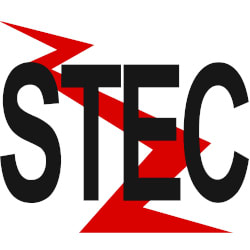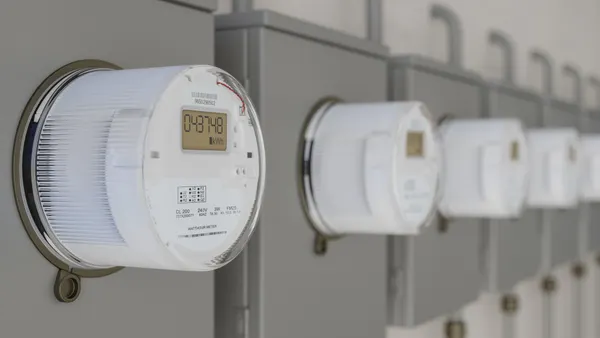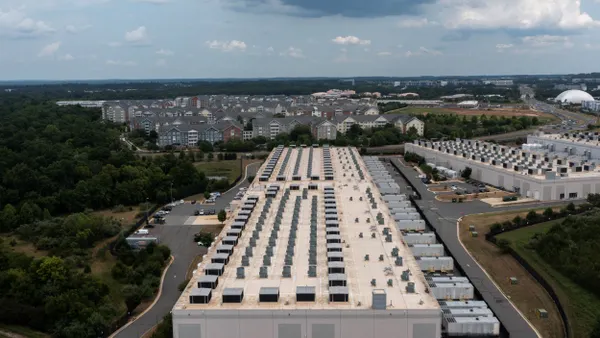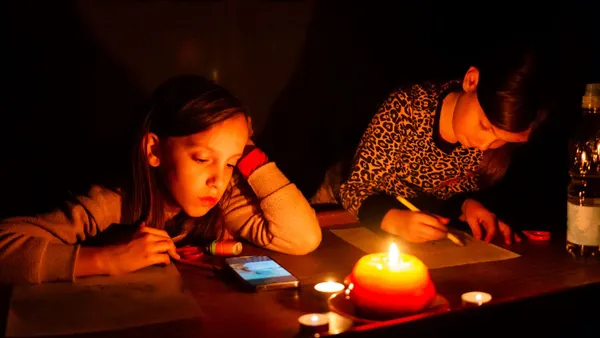The number of U.S. electric vehicles is expected to skyrocket in the coming decades. But how are cities and utilities preparing for that influx? In a two part special report we're publishing today and tomorrow, Utility Dive and Smart Cities Dive explore that question from both the urban planning and power sector perspectives.
As the adoption of plug-in vehicles and other electrified transportation accelerates, the revolution is being hosted and facilitated by cities and towns of varying sizes. In concert with local utilities, they are rolling out policies and projects and replacing aging fleets, while working to enable the shift among residents and businesses.
"Most cities are in the early stages of electrification," Lang Reynolds, Duke Energy's director of electrification strategy, told Utility Dive. Transportation is the largest driver of emissions and urban air quality, so cities see electrification as "one of their biggest opportunities."
But that opportunity comes with challenges: utilities will need to generate and deliver more electricity — often to areas already experiencing high demand. And EV adoption is only expected to grow.
In some instances, distribution system upgrades are necessary to accommodate charging, and city codes and laws must be navigated by customers. Utilities are increasingly stepping in, working with customers to better discern their electrification needs and the most effective ways to move forward.
In 2018, electric vehicles saw strong growth and wound up with a 2.1% market share of new passenger vehicles, nationwide. But the numbers show dramatically higher uptake in cities, according to the International Council on Clean Transportation (ICCT).
California is the national leader on EVs, and San Jose had the highest 2018 EV market share at 21%. In Seattle, EVs had a 4% market share; in Portland, Oregon, 13%. Overall, in a survey of the 50 largest cities, ICCT found EV market share was about 2.7% compared with 1% elsewhere.
The relationship between public charging ports and EV adoption is clearly linked: According to ICCT, of the 20 areas with the highest EV adoption in 2018, 19 had an above-average number of public charging points.
"Developing electric vehicle markets continue to build out public charging infrastructure. From 2017 to 2018, the number of the major metropolitan areas with more than 200 public charge points per million population doubled from 34 to 64," ICCT wrote in a June briefing titled "The surge of electric vehicles in United States cities."
Lead by example
Municipalities are working to electrify their own fleets, as well as help citizens and businesses go electric.
"There are a great number of examples of how utilities are stepping into the game and working with local governments to do this right."

Amy Bailey
Director of Sustainability Engagement, Center for Climate and Energy Solutions
Research by the U.S. Conference of Mayors and the Center for Climate and Energy Solutions (C2ES) shows almost 60% of city governments have green vehicle purchasing policies, and another 26% are considering them. Some 57% of cities have a policy or program for public electric vehicle charging stations, according to C2ES' annual survey, and an additional 22% percent are considering.
Increasingly, that is being done in concert with local utilities.
"There are a great number of examples of how utilities are stepping into the game and working with local governments to do this right," C2ES Director of Sustainability Engagement Amy Bailey told Utility Dive. "Cities are very much in the middle of it."
C2ES' survey found "strong collaborative relationships with utilities in particular appear to be key components of successful climate efforts."
The group's survey has for years seen efficiency top the list of city interests, according to Bailey, but transportation issues have been climbing, particularly related to climate issues.
The city-utility relationship looks different, depending on the situation. Municipal utilities do have some advantages, when it comes to electrifying, said Bailey. "There is a much closer connection between the city and utility."
Municipal utilities are able to work in close concert with city policymakers, even alongside those overseeing business codes. But investor-owned utilities often must go through lengthy regulatory proceedings. In addition, an investor-owned utility must be looking out for its rate of return, while a muni just needs to recover costs.
"We have a few more tools than an IOU might," Los Angeles Department of Water and Power Chief Sustainability Officer Nancy Sutley told Utility Dive.
"We aren't influenced by whether we can put something in ratebase and earn a return on it," Sutley said. "We're a part of the city. We work closely with other city departments. We have a very close relationship to policymakers who want Los Angeles to be a leader in electric transportation."
Bailey said C2ES has tracked the relationship between cities and utilities over years, and it has not always been as strong as might be liked. "But it's gotten a lot better in recent years," she said.
However, closer relationships are showing up in infrastructure, and in clean air benefits. San Diego Gas & Electric has been working with the Port of San Diego to install chargers for electric medium-duty/heavy-duty vehicles and forklifts; Dominion Energy is working with school districts to utilize electric school buses; Austin Energy partnered with a school district to install not just chargers but included an EV education component for students.
Grants to cities
Duke Energy says it has worked with the majority of large cities in its service territory on transportation electrification. "Most are pretty early-stages. They have aggressive goals but are still planning for what that looks like," Reynolds said.
Duke most recently announced a $200,000 grant for the city of Asheville, N.C., to help fund electric bus-charging stations installed by the city earlier this year. The utility provided Greensboro, N.C, $450,000 in assistance in 2016 for a system it says can fully charge an electric bus in 10 minutes or less. And it has also worked with the South Carolina cities of Greenville and Clemson on transportation electrification issues.
Duke says it has helped fund almost 200 public EV charging stations in North Carolina, with money partially supplied by a 2015 settlement with the U.S. Environmental Protection Agency and environmental groups related to pollution from coal-fired power plants in the state.
"Electric buses are the biggest thing cities are doing, in addition to light duty fleets," Reynolds said.
Even if funds are not coming from the utility, the relationship is still important.
Bill Boyce, supervisor of electrified transportation for Sacramento Municipal Utility District, said planning for electrification has been going on for years between the city and utility. "We've worked with city staff, even helped them get grants from the state to help the planning," he said. "We've had a very long, steady EV program."
Best Practices for Utility-City Collaboration on EV Charging |
|---|
|
Collaboration
Boyce says collaboration has been a key to electrification. The utility takes part in a monthly meeting of the Sacramento Area Plug-in Electric Vehicle Collaborative, discussing electrification issues with the City of Sacramento, County of Sacramento, local EV drivers groups, contractors and suppliers. It is a blend of government, public and private sector.
"We try and coordinate as much as we can at a regional level," Boyce said.
Ben Prochazka is vice president of the Electrification Coalition, which works with cities across the country as they go through the electrification process to provide technical expertise, best practices and EV fleet transition support.
The coalition is also part of a climate purchasing collaborative in partnership with Climate Mayors, a peer-to-peer network of U.S. mayors focused on climate change, and Minnesota service cooperative Sourcewell.
"We've had to do significant upgrades to distribution delivery systems for individual customers, but not anything outside the normal course of operations."

Lang Reynolds
Director of Electrification Strategy, Duke Energy
"If you do an RFP as a smaller city, you may not get as many EV model options. By aggregating the demand from cities around the country and doing it through a cooperative purchasing effort, all of these cities benefit together," Prochazka told Utility Dive.
Another pain-point addressed via aggregation: Cities as non-taxed entities cannot access federal tax credits for EVs. "One of the products we've created is a leasing option," Prochazka said, also known as a "capital purchasing lease."
"Cities can, essentially through a leasing agency, access the tax credit and significantly reduce the upfront cost of the vehicle and ultimately the total operational costs of an EV," he said.
Grid reliability, V2G potential
As more electric vehicles connect to the grid, they have the potential to be a liability or an asset.
The National Renewable Energy Laboratory concluded in a 2018 paper titled “Impact of Uncoordinated Plug-in Electric Vehicle Charging on Residential Power Demand” that just a few vehicles in the same geographic areas could put stress on residential distribution transformers. The problem is exacerbated as more customers adopt Level 2 charging at home.
"We've had to do significant upgrades to distribution delivery systems for individual customers, but not anything outside the normal course of operations," said Reynolds.
A lot of the planning for transportation electrification "falls into traditional operations" for the utility, he said. Sufficient generation is not expected to be an issue for Duke — or for most utilities. Managed efficiently, they see electric vehicles as a way to soak up excess mid-day renewable energy.
Los Angeles Department of Water and Power is developing a smart charging pilot that will utilize chargers with wireless technology. The utility currently offers a discounted rate for charging off-peak, but Chief Sustainability Officer Sutley said it requires a separate meter "so we haven't seen a lot of uptake."
Sutley said the utility also recently adopted a pilot rate for heavy duty charging, trying to respond to some of the needs of the city's transit agencies, including demand charges, and giving them the option to add energy storage.
Right now, utilities seem to be keeping their expectations modest when it comes to EV charging and grid management.
The idea of using EVs as a grid resource, injecting power back into the distribution system, "has gotten a lot of hype over the last few years, but in terms of providing value to the grid we still have some work to do, to prove that out," said Reynolds.
Duke has proposed testing school buses with vehicle-to-grid (V2G) capabilities in the Carolinas and Midwest, but right now "we're just looking to test the capabilities," Reynolds told Utility Dive.
Buses are often considered as potential grid assets, and school buses in particular, because they are not being used most of the time. "They sit idle most of the day during the school year, then most of the summer," said Lang. "We think there is potential there."
SMUD's Boyce points to the expensive technology required for V2G. "A lot of the network communication systems required to pull that off, eat up a lot of the value," he said.













